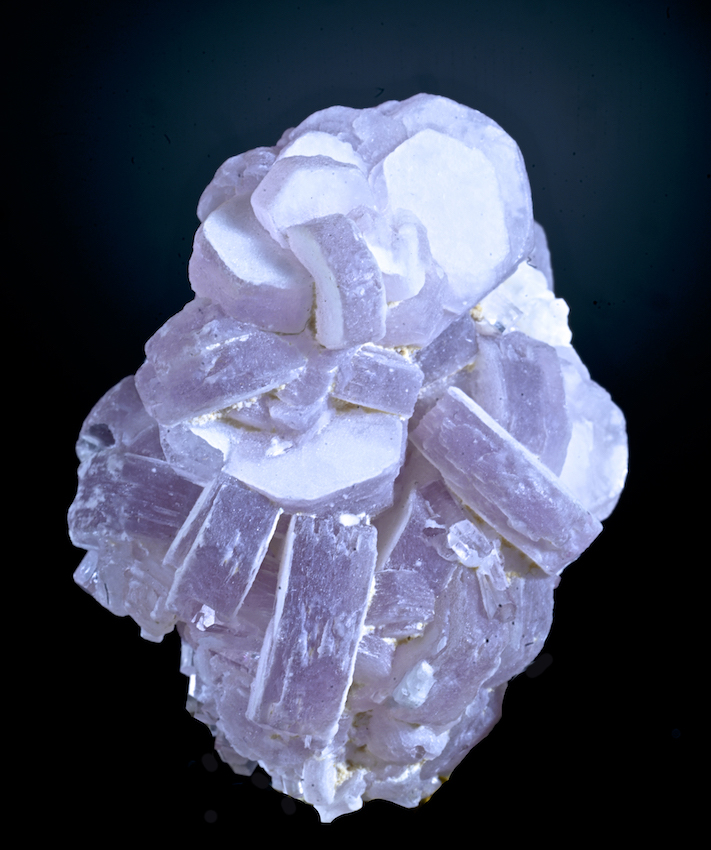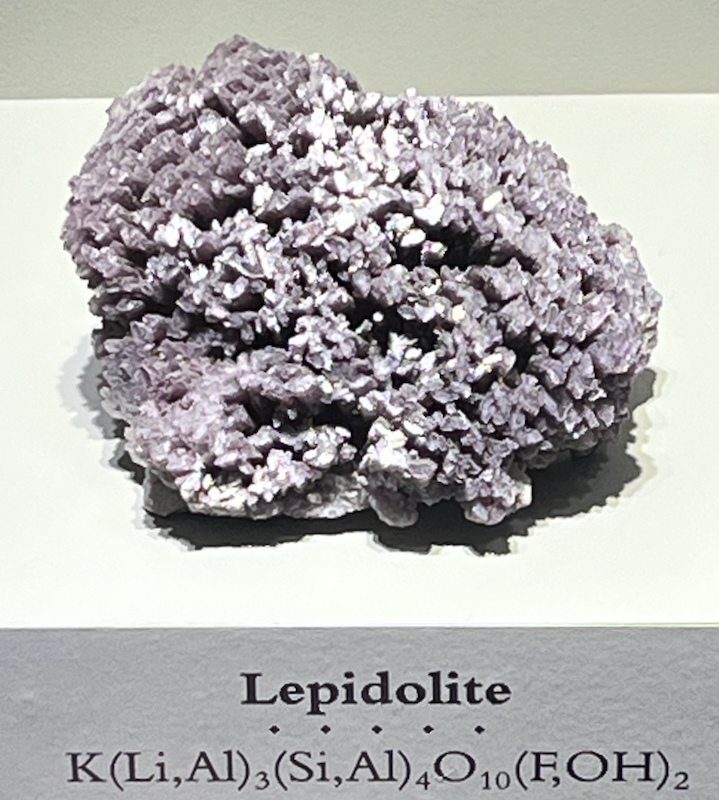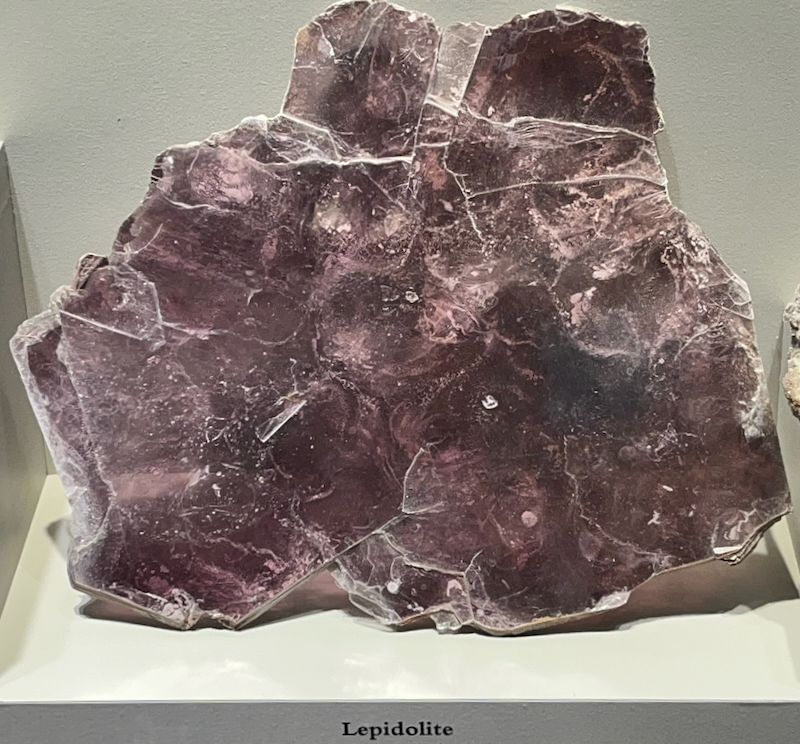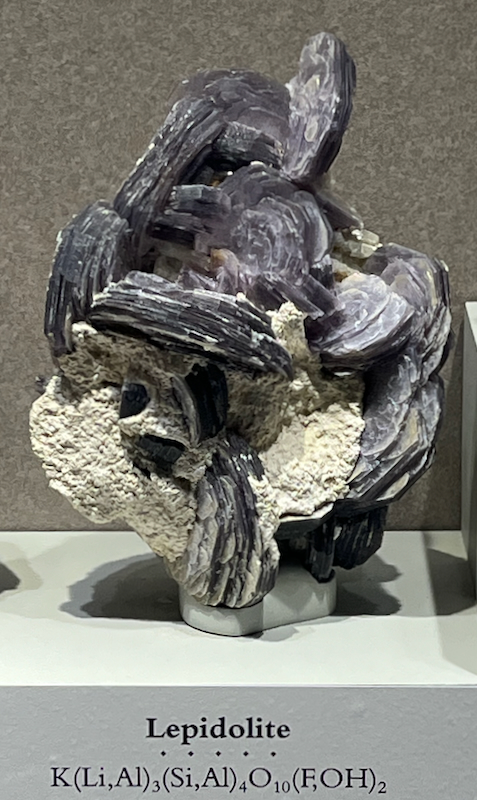Lepidolite
The easiest way to describe lepidolite is that it’s like purple mica. In fact, sometimes you can find lepidolite forming the edge around a piece of clear (or silver) mica (muscovite), so they are related. For years, a lot of people have thought that lepidolite is muscovite with some lithium added to it to make it purple (or pinkish), but scientists these days say that manganese is what makes it purple. Hmm…but there’s no manganese (Mn) in the formula, and there is lithium (Li), and it has even had the nickname “lithium mica” in the past! But sometimes some elements can sneak into a mineral’s crystal matrix in just enough quantity to change its color–even just an atom here and there–without adding up enough to make it into the mineral’s formula. So maybe Mn is the purple culprit! The whole color issue aside, lepidolite can be flaky like muscovite, or it can be more solid and form in odd-shaped crystal stacks or as big chunks the size of boulders. Some stonecutters have carved beautiful sparkly purple vases or other shapes from these boulders. Lepidolite is cool and pretty all by itself, but often you can find tourmaline in the same place, or even in the same specimen, and that’s a great bonus.
| Formula | Group or Type | Shape | Hardness | Specific Gravity | Streak | Luster |
|---|---|---|---|---|---|---|
| K(Li,Al3)(Si3Al)O10(OH,F)2 | Mica | Monoclinic | 2.5–3 | 2.8–2.9 | White | Vitreous to pearly |



